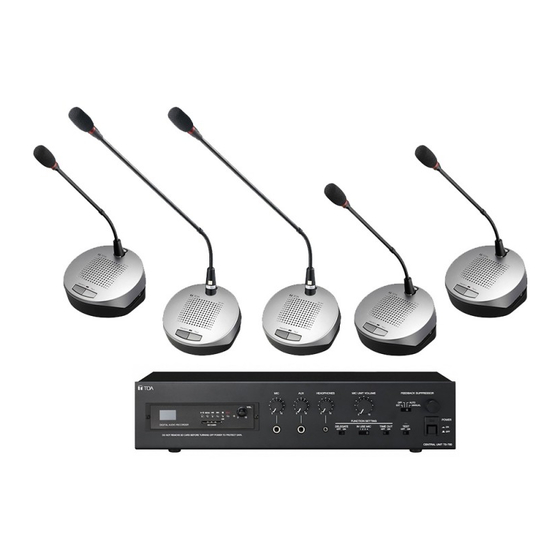
Table of Contents
Advertisement
CONFERENCE SYSTEM
TS-780
(CENTRAL UNIT)
TS-781
(CHAIRMAN UNIT)
TS-782
(DELEGATE UNIT)
TS-773/774
TS-781
Thank you for purchasing TOA's Conference system.
Please carefully follow the instructions in this manual to ensure long, trouble-free use of your equipment.
OPERATING INSTRUCTIONS
TS-773
TS-774
YR-780-2M
YR-780-10M
TS-780
TS-773/774
TS-782
TS-780 SERIES
(MICROPHONE)
(MICROPHONE)
(2 m EXTENSION CORD)
(10 m EXTENSION CORD)
Advertisement
Table of Contents
















Need help?
Do you have a question about the TS-780 and is the answer not in the manual?
Questions and answers